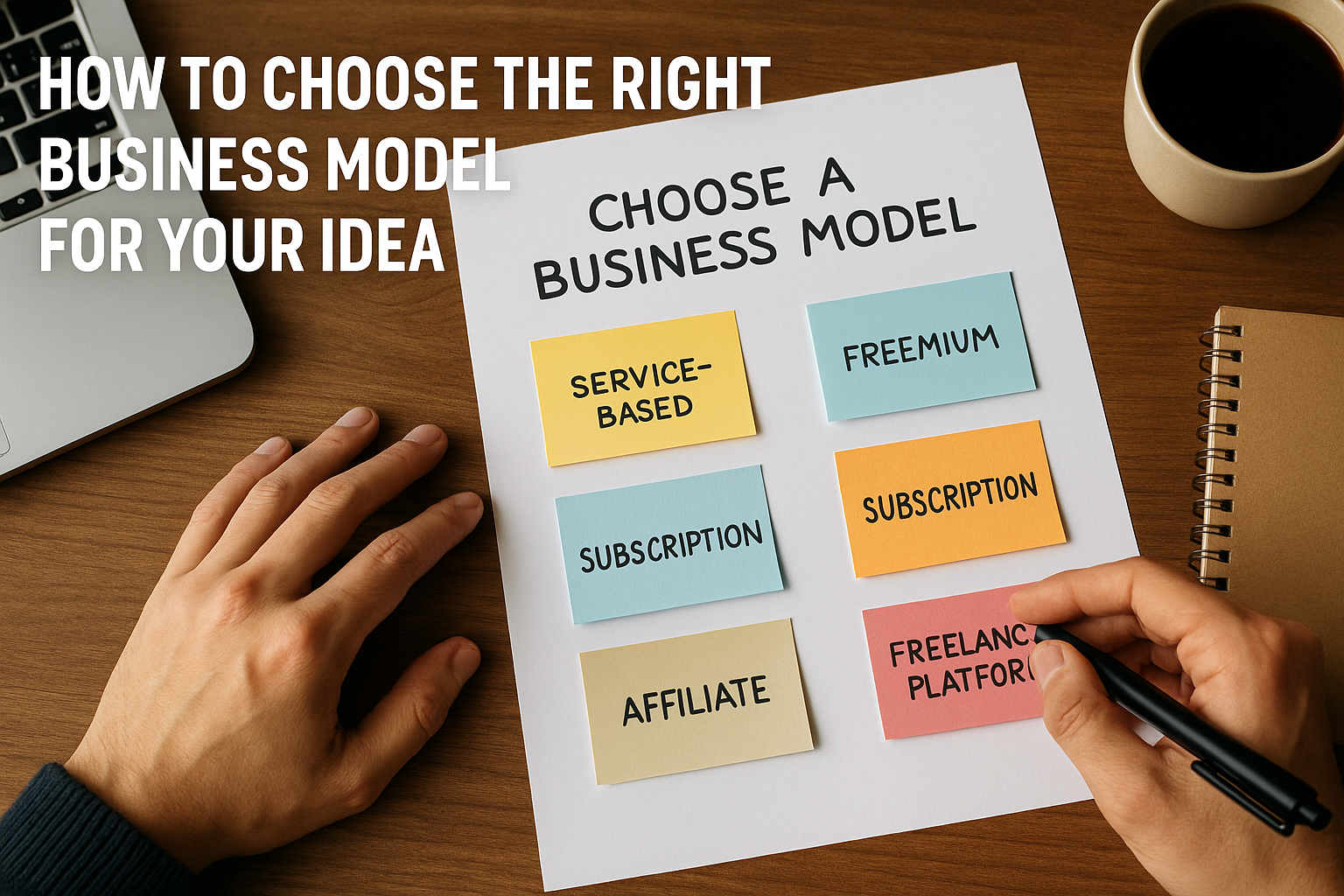Choosing a business model is one of the most important decisions you’ll make as a new entrepreneur. It defines how you’ll generate income, who you’ll serve, and what structure your business will follow.
Many great ideas fail simply because they’re built on the wrong model. But when you choose the right one, it becomes easier to grow, scale, and stay profitable.
Let’s explore what a business model is, types you can choose from, and how to select the best one for your goals.
What Is a Business Model?
A business model is the framework that explains how your company creates, delivers, and captures value.
It answers key questions like:
- What do you sell?
- Who do you sell it to?
- How do you deliver it?
- How do you make money from it?
Without a clear model, your business can lack direction, confuse customers, or run into financial issues.
Why the Right Business Model Matters
Choosing the right model affects:
- Revenue potential
- Scalability
- Marketing strategy
- Operational costs
- Customer satisfaction
If your model doesn’t align with your goals, skills, and audience—you’ll struggle to grow sustainably.
1. Understand Your Strengths and Resources
Before choosing a model, evaluate your situation:
- Do you prefer working 1-on-1 or with groups?
- Do you want passive income or active involvement?
- How much time and money can you invest upfront?
- Are you more skilled at creating products or providing services?
Your business model should match your personality, lifestyle, and skill set.
2. Know Your Audience’s Behavior
The best model fits your audience’s preferences. Ask:
- Do they prefer digital or physical products?
- Are they used to paying monthly or one-time?
- Do they value speed, customization, or convenience?
The better you understand your market, the easier it is to choose a model they’ll respond to.
3. Common Business Models for First-Time Entrepreneurs
Here are some beginner-friendly models to consider:
A. Service-Based Business
You sell your time and expertise directly to clients.
Examples: coaching, design, consulting, photography
✅ Pros:
- Fast to launch
- Low startup cost
- High trust and relationship-driven
❌ Cons:
- Hard to scale
- Income tied to your time
B. Freemium + Upsell
Offer a free product or service to attract users, then upsell paid features or services.
Examples: free ebook → paid course, free app → pro version
✅ Pros:
- Attracts a large audience quickly
- Builds trust and authority
❌ Cons:
- Requires a strong conversion strategy
- You must deliver real value for free
C. Subscription / Membership
Charge a recurring monthly fee for access to exclusive content, community, or products.
Examples: online community, digital library, curated product boxes
✅ Pros:
- Predictable monthly revenue
- Builds long-term relationships
❌ Cons:
- Requires ongoing content or support
- Higher churn risk if value drops
D. Product-Based Business
Sell physical or digital products (handmade items, books, templates, courses).
✅ Pros:
- Scalable if demand grows
- Can be automated with the right systems
❌ Cons:
- Requires upfront work or inventory
- Fulfillment and logistics can be complex
E. Affiliate Marketing
Promote other people’s products and earn a commission for each sale.
✅ Pros:
- No product creation required
- Passive income potential
❌ Cons:
- Depends on trust and traffic
- Payouts may be low without volume
F. Freelancer Platform Model
Offer your service through sites like Fiverr, Upwork, or 99designs.
✅ Pros:
- Quick exposure to leads
- No need to build your own site initially
❌ Cons:
- High competition
- Platform fees reduce earnings
4. Test Before You Commit
Before going all-in, validate your model by:
- Running a pilot program
- Pre-selling your offer
- Collecting email signups
- Offering a mini version of your product
- Interviewing potential customers
Real feedback beats assumptions.
5. Keep It Simple at First
Don’t try to do everything at once.
Start with one core model and optimize it before expanding. As you grow, you can add new revenue streams—but in the beginning, focus brings faster results.
6. Stay Flexible and Evolve
Many successful entrepreneurs pivot their model over time. It’s okay to adjust as you learn what works.
You might start as a freelancer and evolve into creating online courses. Or begin with 1-on-1 services and expand into group programs.
Listen to your audience, review your numbers, and adapt without losing your core mission.
Final Thoughts: Choose a Model That Works for You
The “best” business model is the one that fits your goals, your lifestyle, and your audience.
Don’t get distracted by what everyone else is doing. Choose a path you can commit to, test quickly, and grow into confidently.
Start simple. Stay focused. Refine as you go.
